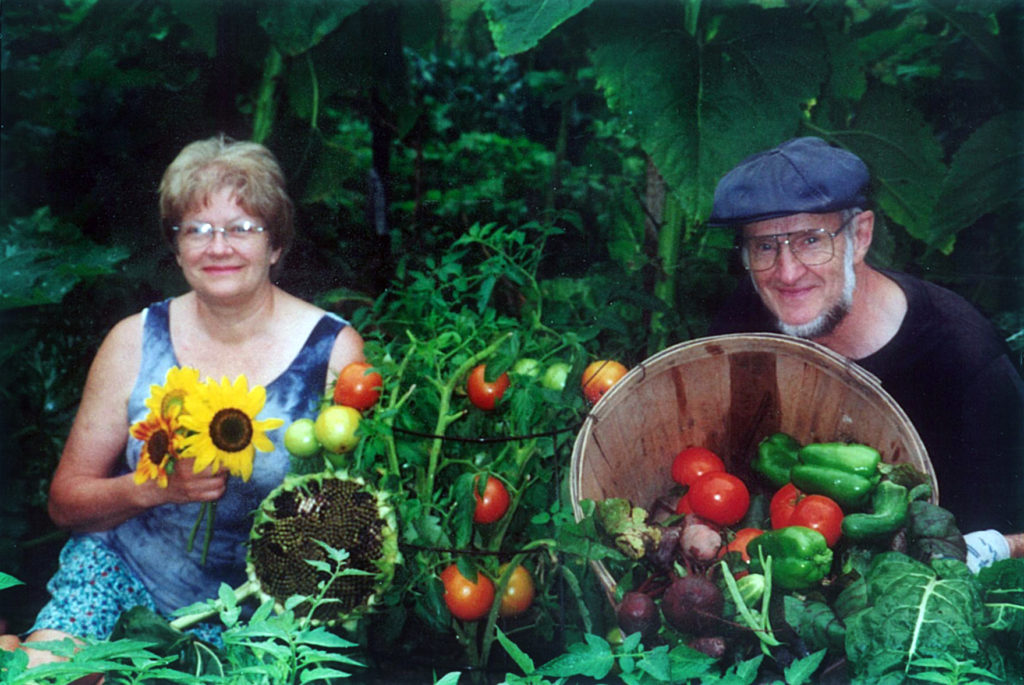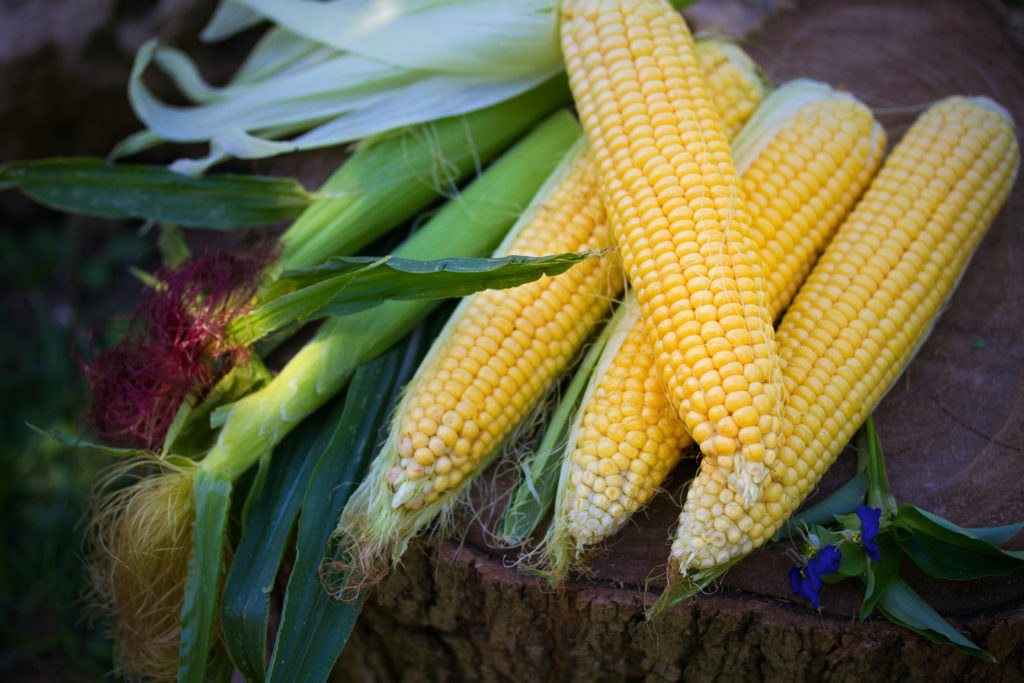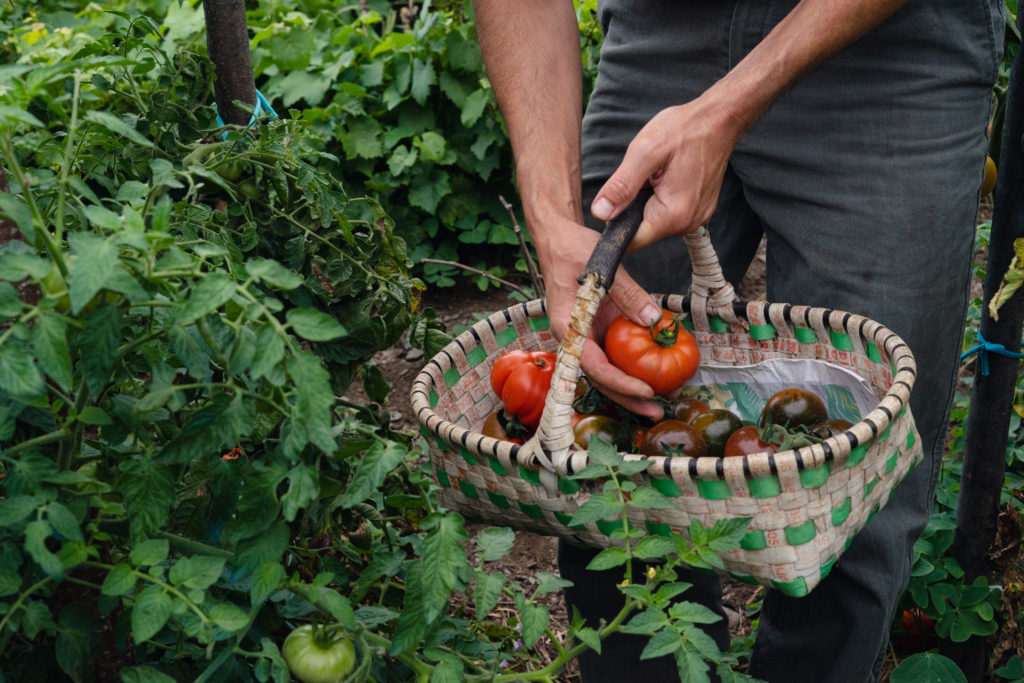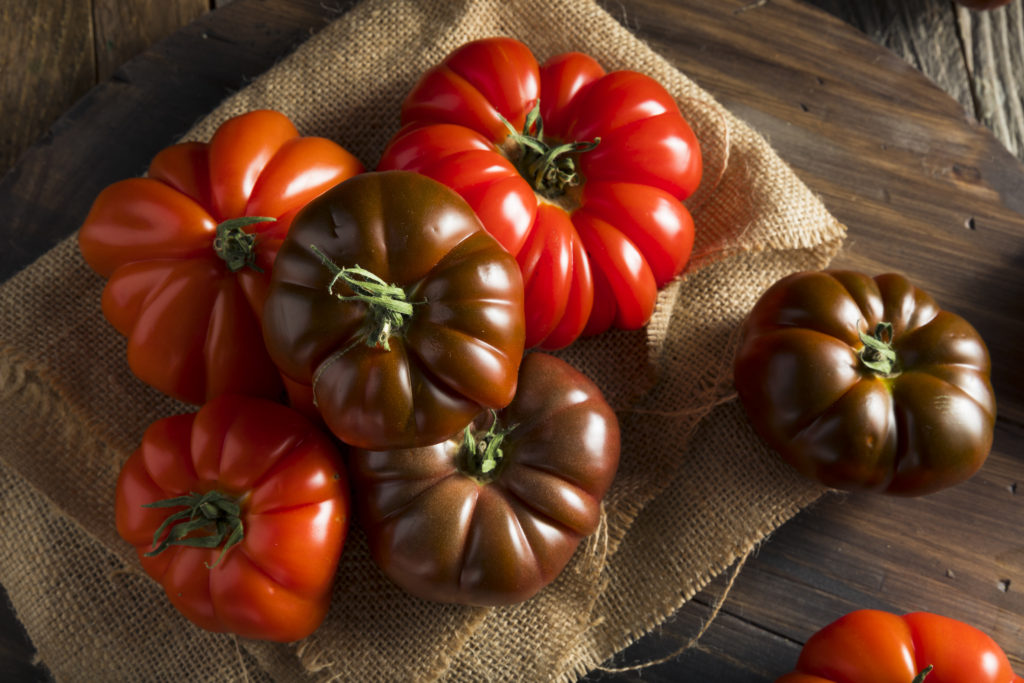January 28, 2020
By Mike Schut, Farm Table’s Senior Program Director
I grew up outside of Rochester, Minnesota. My dad had grown up on a dairy farm in central Minnesota; my mom was raised on a corn, soybean, and hog farm in southeastern Iowa. And though we didn’t farm, the size of our garden sometimes made me wonder if my parents had forgotten that.

Picking green beans–knee-high, bushy plants with large green leaves meant (it seemed) to conceal the skinny green beans growing at backbreaking levels–was the worst. My sisters, Lynn and Katrina, and I felt those rows upon rows of beans were interminable. Had my parents missed the fact that there were only five of us to feed? Were they unaware of child labor laws?
In contrast, tomatoes–sporting large, red fruit against green vegetation–and corn–bearing forearm-sized ears, easily snapped off at chest level–seemed well worth the effort.
Describing tomatoes and corn as “well worth the effort,” however, is a bit like saying Yosemite or the Grand Canyon are “worth seeing.” Southeastern Minnesota is prime corn and tomato country, featuring that combination of summer heat, humidity, and rich soil that each year miraculously turns corn and tomato seeds into food fit for the gods.
As early August rolled around, Mom or Dad gave periodic tomato progress reports. We knew when those first few blushes of red appeared, and when we might expect to taste the first of that year’s crop. The occasion of harvesting the first ripe tomato was a significant calendar marker: Katrina’s birthday is in January, Mom’s in February, mine in May, Lynn and Dad’s are in June, tomatoes ripen in August.
That first tomato was both highly anticipated and anxiety provoking: though raised to be generous, we definitely wanted to get our one-fifth share. Among other genetic similarities, each one of us cherished fresh garden tomatoes as a favorite food. Even when there were enough for breakfast, lunch, and dinner, I remember furtively watching the tomato platter as it was passed, challenging my sisters if they exceeded their fair share of the best slices. I know I also was under their surveillance. In the Schut family, practicing “do unto others as you would have them do unto you” faced its stiffest challenge as those plates of fresh tomatoes were passed around the table.

As the tomato fest was underway, the first ears of corn ripened too. Dad would say he thought the corn was ready. He would walk across the front lawn to the corn patch, disappear into the rows for a short while, and reappear with a bucket of ears. A couple of us would help shuck the corn, which was immediately dropped into boiling water and, five minutes later, placed steaming on our plates.
Corn is all the best that a midwestern summer offers–throbbing heat, thunderstorms, humidity, the smell of rain-washed air after an evening shower, the crickets’ song, and morning dew–compressed into a tiny kernel.
A Pilgrimage: Coming Home to Eat
For years I lived in Seattle where I tended a small backyard garden. Summers in Seattle are just too cool for “real” tomatoes and corn! I did not even bother to plant corn; and my tomatoes were never as sweet, rich, or complex. Thankfully, I usually made it back to Minnesota twice a year. Once at Christmas and, ideally, once in August, the corn-and-tomato-month. It was a comforting time to be home. I felt nurtured not only through being around Mom and Dad and Katrina, but through their garden’s bounty. I ate tomatoes three times a day–salted and carefully centered on a lightly toasted and buttered slice of bread. Almost every meal was comprised of garden produce: corn, tomatoes, cucumbers, zucchini sautéed with garlic and onions, potatoes, green beans (which, as an adult, I didn’t mind picking now and then–though to this day refuse to grow my own!).
My August trips back home in some ways resembled a pilgrimage. Pilgrims travel to kindle their connections to a sacred place. Their journeys bring them, if not to a physical home, then to a home within, a restful, familiar, healing place that reminds them of who they are. The sacred site to which I return is my childhood home. My body remembers the feel of the garden underfoot, the aroma of mom’s cooking, the nighttime crickets, the wall of heat, and the colors and tastes of garden-fresh meals.
Whether or not I made it back to Minnesota in August, Mom and Dad often would mail my sister Lynn (who still lives in Seattle) and me a box of tomatoes from the garden. They would pick about thirty, wrap each in newspaper, and send them our way, trusting that, as adults, we would be open to fully sharing. Or, better than mailing, Mom and Dad would bring tomatoes with them as carry-on when they flew to Seattle in August or September. They’ve been known to bring over 100 per trip!

Those tomatoes became not only food for my physical self, but a symbol of the ways in which we as a family seek to care for each other, and a reminder of the connections between us. From there it is not difficult to remember that, no matter my parents’ gardening skills, our sustenance ultimately depends on the gift of Earth’s fertility. From there, simple expressions of gratitude seem the most natural thing. In a way the tomato became sacramental, not in the formal sense as part of a religious liturgical rite, but as a “sign or symbol of a spiritual reality,” (to quote Webster).
Food as Sacramental
Seeing the tomato, a common food in many meals, as sacramental may seem unusual, even sacrilegious, to some. But the word sacrament need not be tied to religious understandings of the word.
Consider what author Frederick Buechner writes: “Sacramental moments can occur at any moment, at any place, and to anybody. Watching something get born. Making love. A walk on the beach. Somebody coming to see you when you’re sick. A meal with people you love.…If we weren’t blind as bats, we might see that life itself is sacramental.”
And author Wendell Berry poignantly summarizes how the settings and elements of everyday meals carry within them a kind of sacramental power: “We cannot live harmlessly or strictly at our own expense; we depend upon other creatures and survive by their deaths. To live, we must daily break the body and shed the blood of creation. The point is, when we do this knowingly, lovingly, skillfully, reverently, it is a sacrament; when we do it ignorantly, greedily, clumsily, destructively, it is a desecration.”
“When we do this knowingly, lovingly, skillfully, reverently, it is a sacrament.” Berry is suggesting that we can be blessed with sacramental moments when we “break the body and shed the blood of creation” in a certain way: more knowingly than ignorantly, more lovingly than greedily, more skillfully than clumsily, more reverently than destructively.
Of course, Berry is also acknowledging that we cannot live but that others die: “To live, we must daily break the body and shed the blood of creation.” Daily we participate in the reality of our dependence on mysteries that we do not fully understand. And daily we have the opportunity to experience food as a sacrament–where the appropriate metaphor for food is not fuel but rather communion: with those family and friends sharing the meal, with those whose skill grew and harvested the food, and with soil, water, and the myriad creatures who share our Earth home.

Coming Home to Eat
I began this piece by reflecting on my experiences of returning home to eat–how I am more than physically fed at such times. If fortunate enough to have a good home, we return there not only to eat but also to be nurtured. One of the ways we know we are home is through the food prepared for us.
In the story of the prodigal son, a young man takes his father’s inheritance, quickly exhausting it on reckless living. Destitute, desperate, and hungry, the son decides to return home. He plans to simply ask his father to treat him as one of the hired men, who at least are well fed. But the father, upon seeing his son, runs to him, kisses and hugs him, clothes him, kills the “fatted calf” and throws a feast. The feast’s significance becomes clear if we try to imagine the story without it: if, say, after kissing, hugging, and clothing him, the father had said, “Glad you’re home–help yourself to what’s in the fridge.” The feast is a sign that the son is loved, welcomed, and truly home.
Gary Paul Nabhan spent a year eating foods that grew no farther than 250 miles from his home. He titled his book about that year Coming Home to Eat. Most broadly understood, coming home to eat recognizes Earth as our home, and recognizes that how we eat “determines to a considerable extent how the world is used,” (to quote Berry again).
In the epilogue to Coming Home to Eat, Nabhan writes: “If we no longer believe that the Earth is sacred, or that we are blessed by the bounty around us, or that we have a caretaking responsibility given to us by the Creator…then it does not really matter to most folks how much ecological and cultural damage is done by the way we eat.”
Significantly, Nabhan concludes that eating in ways that honor food’s sacramentality is crucial if we are to care for the Earth. We all eat. We all wish to leave our children and grandchildren a healthy world–we at least share that in common. To do so, we need to work together to create and support food systems that recognize and celebrate food as sacramental.
References:
- Buechner, Frederick. Wishful Thinking.
- Berry, Wendell. The Gift of Good Land.
- Nabhan, Gary Paul. Coming Home to Eat.
Note: this piece is excerpted from Mike’s book Food and Faith: Justice, Joy, and Daily Bread, published by Church Publishing.
